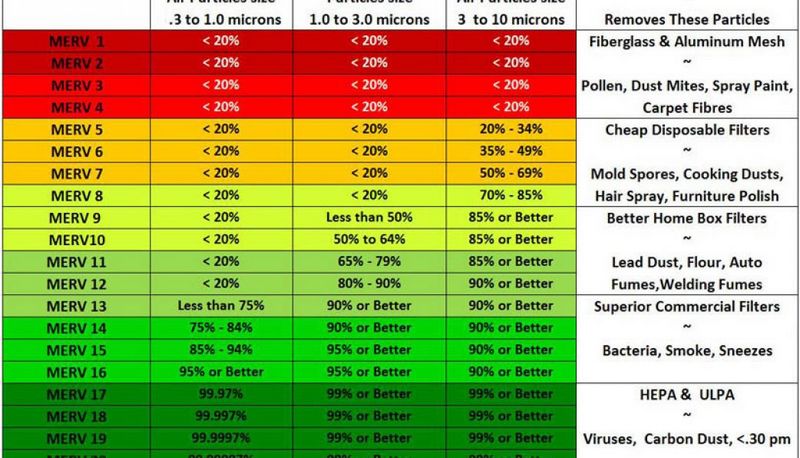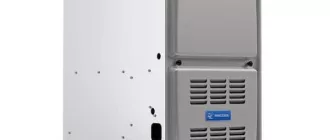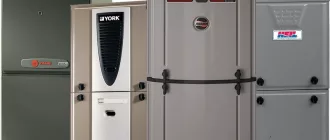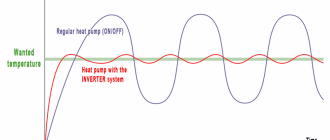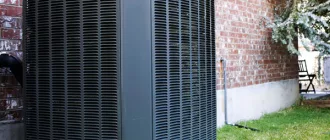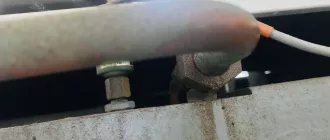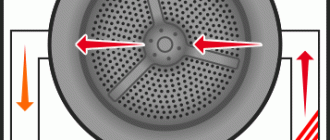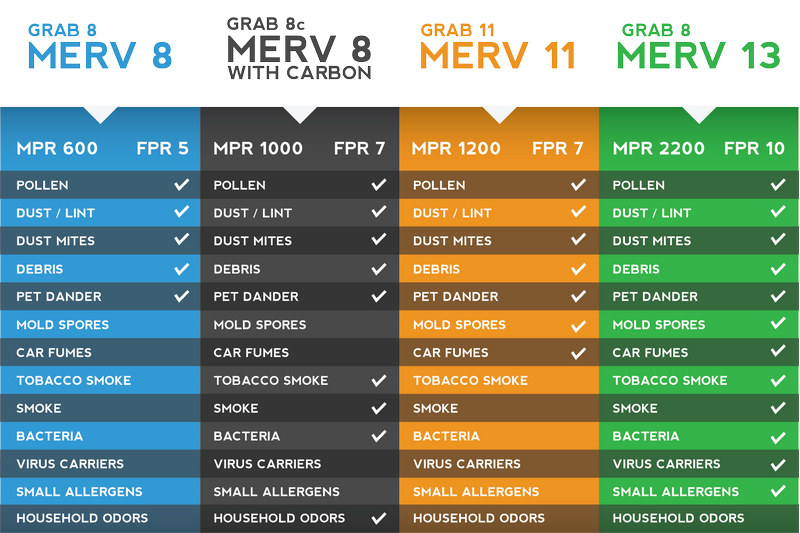
The Importance of Air Filters: Breaking Down MERV Ratings
In today’s world, where air pollution is becoming a growing concern, it is of utmost importance to take measures to improve indoor air quality. One simple yet crucial step in achieving this is by using air filters. But how do you know which air filter is the best for your needs? The answer lies in understanding and breaking down MERV ratings.
MERV stands for Minimum Efficiency Reporting Value, and it is a rating system that measures the effectiveness of an air filter in trapping and removing airborne particles. The higher the MERV rating, the better the filter is at capturing smaller particles and improving air quality.
Why is it important to consider MERV ratings? Well, air filters play a vital role in reducing the number of contaminants and pollutants in the air we breathe. Whether it’s dust, pet dander, pollen, or even bacteria and viruses, air filters act as a barrier, preventing these particles from circulating in our indoor space.
But not all air filters are created equal. Some air filters have a low MERV rating, which means they can only capture larger particles, such as dust and pollen. These filters are suitable for residential spaces where the air quality is relatively good. However, for places with higher pollution levels or individuals with respiratory conditions like asthma or allergies, a higher MERV rating is necessary.
So, what MERV rating should you look for? It depends on your specific needs and circumstances. Generally, a MERV rating of 8 or above is recommended for most residential and commercial spaces. However, sensitive environments like hospitals and laboratories may require filters with a MERV rating of 13 or higher to ensure the cleanest air possible.
In conclusion, understanding and considering MERV ratings when choosing an air filter is essential for improving indoor air quality. By selecting the right filter with an appropriate MERV rating, you can effectively remove harmful particles from the air, creating a cleaner and healthier environment for you and your loved ones.
The Benefits of Air Filters: Understanding MERV Ratings for Better Air Quality
Air filters play a crucial role in maintaining clean and healthy indoor air. They are designed to capture and remove particles and pollutants in the air, improving the overall air quality of your home or business. One important factor to consider when choosing an air filter is its MERV rating.
MERV stands for Minimum Efficiency Reporting Value, and it is a rating system developed by the American Society of Heating, Refrigerating, and Air Conditioning Engineers (ASHRAE). The MERV rating measures the effectiveness of an air filter in removing particles from the air, including dust, pollen, pet dander, and other allergens.
Understanding MERV ratings is essential because it helps you select the right air filter for your specific needs. Filters with higher MERV ratings have a greater capacity to capture smaller particles, providing better air filtration. On the other hand, filters with lower MERV ratings may not be as effective in removing smaller particles, allowing them to circulate in the air.
Higher MERV-rated filters are recommended for individuals with respiratory conditions or allergies, as they can help reduce the presence of airborne allergens. Additionally, filters with higher MERV ratings can provide better protection against bacteria and viruses, promoting a healthier indoor environment.
It’s important to note that while higher MERV-rated filters offer superior filtration, they may also restrict airflow. HVAC systems need to be compatible with the selected filter to prevent any negative impact on system performance. Consulting with a professional can help you determine the appropriate MERV rating for your HVAC system.
In conclusion, understanding MERV ratings is integral to improving air quality in your home or business. By selecting air filters with appropriate MERV ratings, you can effectively reduce the presence of allergens and particles in the air, creating a cleaner and healthier indoor environment for you and your loved ones.
What Are Air Filters?
Air filters are essential devices used to improve indoor air quality by trapping and removing harmful particles and contaminants from the air. They are designed to capture a wide range of pollutants, including dust, pollen, pet dander, mold spores, and even some bacteria and viruses. By filtering the air, these filters help create a cleaner and healthier environment for everyone in the space.
Air filters can be found in various settings, including homes, offices, schools, and medical facilities. They are commonly used in HVAC (Heating, Ventilation, and Air Conditioning) systems to ensure that the air being circulated throughout the building is clean and safe to breathe. Air filters work by forcing the air to pass through a filtration media, where the particles are trapped and prevented from recirculating.
Breaking down MERV ratings is essential when selecting air filters. MERV stands for Minimum Efficiency Reporting Value and is a rating system used to evaluate the effectiveness of air filters. The higher the MERV rating, the more efficient the filter is at capturing smaller particles. Different MERV ratings are suitable for different environments and applications, so it’s important to consider the specific needs and requirements of your space when choosing an air filter.
Overall, air filters play a vital role in maintaining clean and healthy indoor air. They help reduce the risk of respiratory problems, allergy symptoms, and other health issues caused by poor air quality. By regularly replacing or cleaning air filters, you can ensure that your air filtration system continues to work effectively and provide clean air for you and your loved ones.
The Importance of Clean Air
Air quality is a key factor in maintaining a healthy and comfortable home or office environment. Clean air is not only vital for our respiratory health, but it also plays a significant role in our overall well-being.
One of the best ways to ensure clean air is by using high-quality air filters. Air filters, such as MERV (Minimum Efficiency Reporting Value) rated filters, are designed to capture and trap harmful airborne particles. The MERV rating system is an industry-standard measurement that rates the effectiveness of air filters in removing various types and sizes of particles from the air.
By understanding the breakdown of MERV ratings, you can make informed decisions about the type of filter that will work best for your specific needs. The ratings range from 1 to 20, with higher numbers indicating greater filtration efficiency. Filters with higher MERV ratings are capable of capturing smaller particles, such as pollen, pet dander, and dust mites, while filters with lower ratings may only capture larger particles.
Breaking down MERV ratings can help you identify the right filter for your indoor air quality needs. While higher-rated filters provide better air purification, it’s essential to consider factors such as the size of your space, the level of contaminants, and your budget when choosing the appropriate filter.
Investing in air filters with high MERV ratings will significantly improve your indoor air quality and create a healthier living or working environment. Clean air is essential for reducing allergies, respiratory irritations, and the spread of airborne diseases. It also plays a crucial role in enhancing comfort, promoting better sleep, and increasing productivity.
So, don’t let pollutants bring the air quality in your space down. Choose air filters with high MERV ratings to ensure cleaner, fresher, and healthier air for you, your family, and your colleagues.
How Air Filters Work
Air filters play a crucial role in maintaining indoor air quality. They are designed to remove impurities and contaminants from the air, ensuring that we breathe clean and healthy air.
When air flows through an air filter, the filter traps particles such as dust, pollen, pet dander, and other airborne pollutants. The filtering process relies on the principles of several physical mechanisms.
The most common type of air filter is the mechanical filter. These filters are made up of a dense fibrous material, such as fiberglass or synthetic fibers, that creates a barrier through which air must pass. As the air moves through the filter, particles are trapped in the fibers, effectively removing them from the air.
Another type of air filter is the electrostatic filter. These filters use an electrostatic charge to attract and capture particles. The charged particles adhere to the filter’s surface, preventing them from circulating in the air.
HEPA filters are a specialized type of mechanical filter that have a very high rating in terms of their efficiency in removing particles. These filters are capable of capturing particles as small as 0.3 micrometers with an efficiency of at least 99.97%. HEPA filters are commonly used in medical facilities and cleanrooms.
The effectiveness of an air filter is measured by its MERV rating, which stands for Minimum Efficiency Reporting Value. MERV ratings range from 1 to 20, with higher ratings indicating greater efficiency in filtering out particles. It is important to choose an air filter with an appropriate MERV rating based on your specific needs and the level of air quality improvement you desire.
| 1-4 | Low | Residential use, capturing larger particles |
| 5-8 | Medium | Residential use, capturing smaller particles |
| 9-12 | High | Commercial use, capturing fine particles |
| 13-16 | Very high | Hospital use, capturing ultrafine particles |
| 17-20 | Highest | Cleanroom use, capturing microscopic particles |
Regularly changing and maintaining air filters is important to ensure their continued effectiveness in improving indoor air quality. Depending on usage and the environment, air filters should typically be replaced every 30 to 90 days.
By understanding how air filters work and the importance of choosing the right filter with an appropriate MERV rating, we can take important steps towards improving the air quality in our homes and workplaces, leading to better overall health and well-being.
Types of Air Filters
When it comes to breaking down air filters, understanding the different types and their respective MERV ratings is crucial. The MERV (Minimum Efficiency Reporting Value) rating system is used to evaluate the effectiveness of air filters in removing particles from the air.
Here are the main types of air filters and their corresponding MERV ratings:
| Fiberglass Filters | 1-4 |
| Pleated Filters | 4-13 |
| Electrostatic Filters | 1-16 |
| Activated Carbon Filters | 6-9 |
| HEPA Filters | 17-20 |
Fiberglass filters are the most common and affordable type, but they offer minimal filtration. Pleated filters, on the other hand, provide better filtration due to their larger surface area. Electrostatic filters use an electric charge to attract and capture particles, while activated carbon filters are effective at removing odors and chemicals.
Finally, HEPA (High Efficiency Particulate Air) filters are the highest rated filters available, capable of removing over 99% of particles as small as 0.3 microns in diameter. These filters are often used in hospitals and cleanrooms where air quality is of utmost importance.
Understanding the different types of air filters and their MERV ratings can help you choose the right filter for your needs. Whether it’s improving indoor air quality, reducing allergens, or eliminating odors, selecting the appropriate air filter is essential for creating a cleaner and healthier living environment.
The Role of MERV Ratings
When it comes to improving indoor air quality, understanding MERV ratings is essential. MERV stands for Minimum Efficiency Reporting Value, and it is a measurement used to rate the effectiveness of air filters in trapping and removing airborne particles.
Higher MERV ratings indicate a higher level of filtration efficiency. This means that air filters with higher MERV ratings can capture a larger percentage of airborne particles, including dust, pollen, pet dander, and even some bacteria and viruses.
Choosing the right MERV rating for your air filters is crucial as different environments have different air quality requirements. For residential homes, filters with a MERV rating of 8 to 11 are usually sufficient, as they can effectively trap common household allergens. Commercial buildings, on the other hand, may require filters with MERV ratings of 12 or higher to maintain optimal indoor air quality.
It’s important to note that while higher MERV ratings provide better filtration, they may also affect the airflow in your HVAC system. Filters with higher ratings can be denser and may restrict airflow, which can lead to reduced efficiency and increased energy consumption.
Therefore, it’s essential to strike a balance between filtration efficiency and airflow when choosing air filters with MERV ratings. Regular maintenance and replacement of air filters are also necessary to ensure their optimum performance and prolong the lifespan of your HVAC system.
In conclusion, MERV ratings play a crucial role in determining the effectiveness of air filters in improving indoor air quality. Understanding these ratings can help you make informed decisions and choose the right filters for your specific needs.
What Does MERV Stand For?
MERV, which stands for Minimum Efficiency Reporting Value, is a rating system that measures the effectiveness of air filters in removing particles from the air. The MERV rating helps consumers understand how well a filter can trap and filter out various types and sizes of particles.
The MERV rating scale ranges from 1 to 20, with higher ratings indicating a more effective filter. A higher MERV rating means that the filter can capture smaller particles and a greater percentage of airborne contaminants.
The MERV rating system is designed to provide consistency in measuring and comparing the performance of different air filters. It takes into account factors such as particle size range, filter efficiency, and resistance to airflow.
When considering air filters, it is important to understand that different MERV ratings are suitable for different environments and purposes. For example, filters with lower MERV ratings (1 to 4) are generally used in residential settings, while filters with higher MERV ratings (13 to 16) are typically found in hospitals and other healthcare facilities.
It is crucial to choose the right MERV rating based on the air quality needs of your specific environment. Using an air filter with the appropriate MERV rating can help improve indoor air quality and provide cleaner and healthier air for you and your family.
Breaking Down MERV Ratings
When it comes to the importance of air filters, understanding MERV ratings is crucial. MERV, which stands for Minimum Efficiency Reporting Value, is a scale that measures the effectiveness of air filters in removing particles from the air. The higher the MERV rating, the more efficient the filter is at trapping these particles.
Filters with higher MERV ratings are capable of capturing smaller particles, including dust, pollen, pet dander, mold spores, and even bacteria and viruses. This is especially important for individuals with allergies or respiratory conditions, as cleaner air can help reduce symptoms and improve overall quality of life.
It’s important to note that while higher MERV ratings indicate better filtration, not all HVAC systems are compatible with higher-rated filters. It’s essential to consult with a professional or refer to your system’s documentation before selecting a filter with a high MERV rating.
Breaking down the MERV ratings further, here are some key points to consider:
- MERV 1-4: These filters are the least efficient and are typically made of disposable fiberglass or synthetic material. They can capture larger particles but are not effective at filtering smaller particles.
- MERV 5-8: These filters are more efficient and can capture particles as small as 3 microns. They are suitable for residential and commercial applications.
- MERV 9-12: These filters are even more effective and can capture particles as small as 1 micron. They are recommended for households with pets, smokers, or individuals with allergies.
- MERV 13-16: These filters are highly efficient and can capture particles as small as 0.3 microns. They are commonly used in hospitals, clean rooms, and other environments that require superior air quality.
In conclusion, understanding MERV ratings is crucial when selecting air filters to improve indoor air quality. The right filter can make a significant difference in reducing airborne particles and pollutants, providing cleaner and healthier air for you and your loved ones.
Remember to consult with a professional and consider the compatibility of your HVAC system before selecting a filter with a high MERV rating.
Determining the Right MERV Rating
When it comes to air filters, determining the right MERV rating is crucial. MERV stands for Minimum Efficiency Reporting Value, and it measures how effectively an air filter can trap particles of different sizes. The MERV rating ranges from 1 to 20, with a higher rating indicating a higher level of filtration.
How do you decide which MERV rating is right for your needs? It depends on several factors. First, consider the purpose of the air filter. If you are looking to improve indoor air quality in a residential setting, a MERV rating between 8 and 13 is generally recommended. This rating can effectively capture common household allergens such as dust, pollen, and pet dander.
However, if you have specific concerns such as allergies or asthma, you may want to opt for a higher MERV rating, around 11 or above. These filters can capture finer particles such as mold spores and bacteria, providing cleaner and healthier air.
On the other hand, if you are in an industrial or commercial setting where there may be more significant air contaminants, you might consider an even higher MERV rating. A rating of 16 to 20 is typically used in hospitals or clean rooms where very high levels of air filtration are required.
It’s important to note that while a higher MERV rating offers better filtration, it may also reduce airflow in your HVAC system. This can lead to reduced efficiency or increased strain on the system. Therefore, it’s crucial to consult with a professional or refer to your HVAC manufacturer’s recommendations to ensure that the air filter you choose is compatible with your system’s specifications.
In conclusion, determining the right MERV rating is essential for improving indoor air quality. Consider the purpose of the air filter, the specific needs of your environment, and consult with professionals for guidance. By selecting the appropriate MERV rating, you can effectively reduce airborne pollutants and enjoy cleaner and healthier air.
The Impact of MERV Ratings on Indoor Air Quality
When it comes to improving indoor air quality, understanding the importance of air filters and the MERV ratings is crucial. MERV stands for Minimum Efficiency Reporting Value, and it is a rating system that measures the effectiveness of air filters in capturing airborne particles. The higher the MERV rating, the better the filter is at trapping pollutants and improving indoor air quality.
Breaking down MERV ratings allows us to gauge the ability of filters to capture different types and sizes of particles. MERV ratings range from 1 to 20, with higher ratings indicating better filtration capabilities.
Filters with lower MERV ratings, such as 1 to 4, are generally designed to protect the HVAC system rather than improve air quality. They can capture larger particles like pollen and dust, but they are not very effective at trapping smaller particles like bacteria and viruses.
Filters with mid-range MERV ratings, such as 5 to 12, provide a good balance between protecting the HVAC system and improving air quality. These filters can capture a wide range of particles, including mold spores, pet dander, and dust mites.
Filters with higher MERV ratings, such as 13 to 16, are highly efficient at trapping even smaller particles like smoke, bacteria, and viruses. These filters are often recommended for spaces where clean air is critical, such as hospitals or laboratories.
It’s important to note that while high MERV-rated filters provide excellent air filtration, they may also restrict airflow if not properly maintained or if the HVAC system is not designed to handle them. Regular filter replacement and HVAC system maintenance are essential to ensure optimal performance and airflow.
Understanding MERV ratings and selecting the right filter for your specific indoor environment can significantly improve the quality of the air you breathe. Always consult with HVAC professionals to determine the appropriate MERV rating for your system and ensure the best indoor air quality possible.
Finding the Best Air Filter for Your Needs
Now that we have broken down the MERV ratings and understood their importance in improving indoor air quality, let’s discuss how to find the best air filter for your specific needs.
1. Determine your filtration requirements: Consider the specific pollutants or allergens that you want to remove from the air in your home. Different air filters are designed to target different types of pollutants, such as dust, pollen, pet dander, or mold spores. Understanding your filtration requirements will help you choose an air filter that is most effective for your needs.
2. Consider the MERV rating: Now that you are familiar with MERV ratings, you can use this information to select an air filter with the appropriate level of filtration. Remember, higher MERV ratings indicate a higher level of filtration, but keep in mind that filters with higher MERV ratings may also have a higher resistance to airflow. So, it’s important to strike a balance between filtration efficiency and airflow.
3. Choose the right filter type: There are several types of air filters available, including fiberglass, pleated, electrostatic, and HEPA filters. Each type has its own advantages and disadvantages, so it’s important to consider factors such as efficiency, durability, and cost when making your decision.
4. Check the filter lifespan: It’s essential to consider how often the air filter needs to be replaced. Some filters need to be replaced every month, while others can last up to six months. Knowing the lifespan of the filter will help you plan your maintenance and budget accordingly.
5. Consult a professional: If you’re unsure about which air filter to choose, it’s always a good idea to consult with a professional. They can assess your specific needs, offer recommendations, and help you find the best air filter for your home.
By following these steps and considering your specific requirements, you can find the best air filter that will effectively improve your indoor air quality, making your home a healthier and more comfortable place to live.
Factors to Consider When Choosing an Air Filter
When it comes to improving indoor air quality, choosing the right air filter is crucial. With various factors to consider, it’s important to have a good understanding of what each filter offers.
MERV Ratings: MERV stands for Minimum Efficiency Reporting Value. It is a rating system that measures the effectiveness of air filters in trapping particles. The higher the MERV rating, the better the filter is at capturing smaller particles. Keep in mind that higher MERV ratings may also restrict airflow, so it’s essential to find a balance between filtration efficiency and airflow.
Filter Types: There are different types of filters available, including fiberglass, pleated, electrostatic, and HEPA filters. Fiberglass filters are cost-effective but provide minimal filtration. Pleated filters offer better filtration by trapping smaller particles. Electrostatic filters use static electricity to attract particles, while HEPA filters provide the highest level of filtration and are recommended for individuals with allergies or asthma.
Filter Size: Choosing the correct filter size is essential for proper fit and efficient airflow. Check the dimensions of your existing filter or refer to your HVAC system’s user manual to determine the size you need. Installing an ill-fitting filter can result in air leaks and decreased performance.
Airflow: Consider the airflow requirements of your HVAC system. A filter that restricts too much airflow can strain the system and reduce its efficiency. On the other hand, a filter that allows too much airflow may not effectively remove contaminants from the air. Refer to your HVAC system’s guidelines or consult a professional to determine the optimal airflow requirements for your specific system.
Filter Lifespan: It’s important to consider the lifespan of the filter before making a purchase. Some filters may need to be replaced more frequently than others, depending on their efficiency and the air quality in your home. Check the manufacturer’s recommendations for filter replacement intervals and factor this into your decision.
In conclusion, when selecting an air filter, it’s crucial to consider factors such as MERV ratings, filter types, size, airflow requirements, and filter lifespan. By choosing the right filter, you can effectively improve indoor air quality and ensure the optimal performance of your HVAC system.
Maintaining Your Air Filter
Proper maintenance of your air filter is crucial to ensure the best air quality in your home or office. By keeping your filter clean and functioning effectively, you can significantly improve the air you breathe.
Regularly inspect your air filter and check its MERV rating to ensure it is the appropriate level for your needs. The MERV rating is a system that measures the efficiency of an air filter in trapping particles. Higher MERV ratings indicate a greater ability to capture smaller particles, such as dust, pollen, and pet dander.
To maintain your air filter, you should clean or replace it as recommended by the manufacturer. Cleaning methods may vary depending on the type of filter you have. Some filters can be vacuumed, while others may require washing or replacement. Follow the instructions provided with your filter to ensure proper cleaning and maintenance.
In addition to cleaning or replacing your air filter, it is essential to monitor its performance regularly. If you notice a significant decrease in air quality or airflow, it may be time to change the filter. Ignoring a clogged or dirty air filter can lead to reduced efficiency, increased energy consumption, and potential damage to your HVAC system.
Remember, maintaining your air filter is an ongoing process. Stay aware of the recommended maintenance schedule and replace your filter accordingly. By doing so, you can enjoy improved indoor air quality, reduce allergens, and promote a healthier living environment for yourself and your family.
Q&A:
What are MERV ratings?
MERV ratings stand for Minimum Efficiency Reporting Value, which is a standard rating system used to measure the efficiency of air filters. It indicates the filter’s ability to capture and remove airborne particles of different sizes from the air.
How do MERV ratings affect indoor air quality?
MERV ratings directly impact indoor air quality. The higher the MERV rating, the more efficient the air filter is at capturing and removing small particles such as dust, pollen, pet dander, and bacteria. This leads to cleaner and healthier indoor air.
What MERV rating should I choose for my air filter?
The ideal MERV rating for your air filter depends on various factors such as the air quality in your area, the size of your living space, and the sensitivity of the occupants to allergens. Generally, a MERV rating between 8 and 13 is sufficient for most residential homes.
Can using an air filter with a high MERV rating impact the airflow in my HVAC system?
Yes, air filters with higher MERV ratings tend to have denser filter media, which can restrict airflow in HVAC systems. It is crucial to choose an air filter with a MERV rating that is compatible with your HVAC system’s airflow capacity to avoid any issues.

